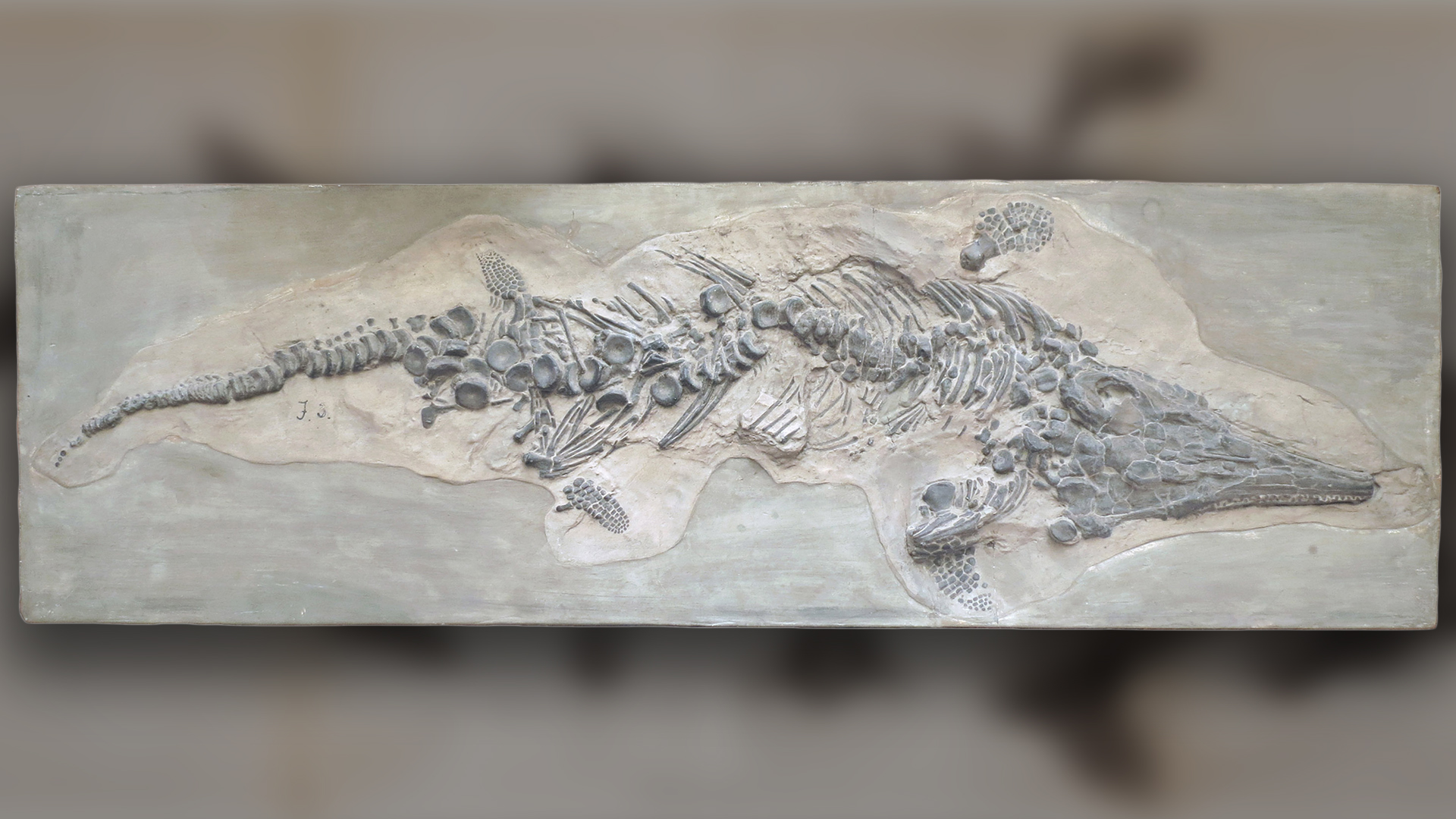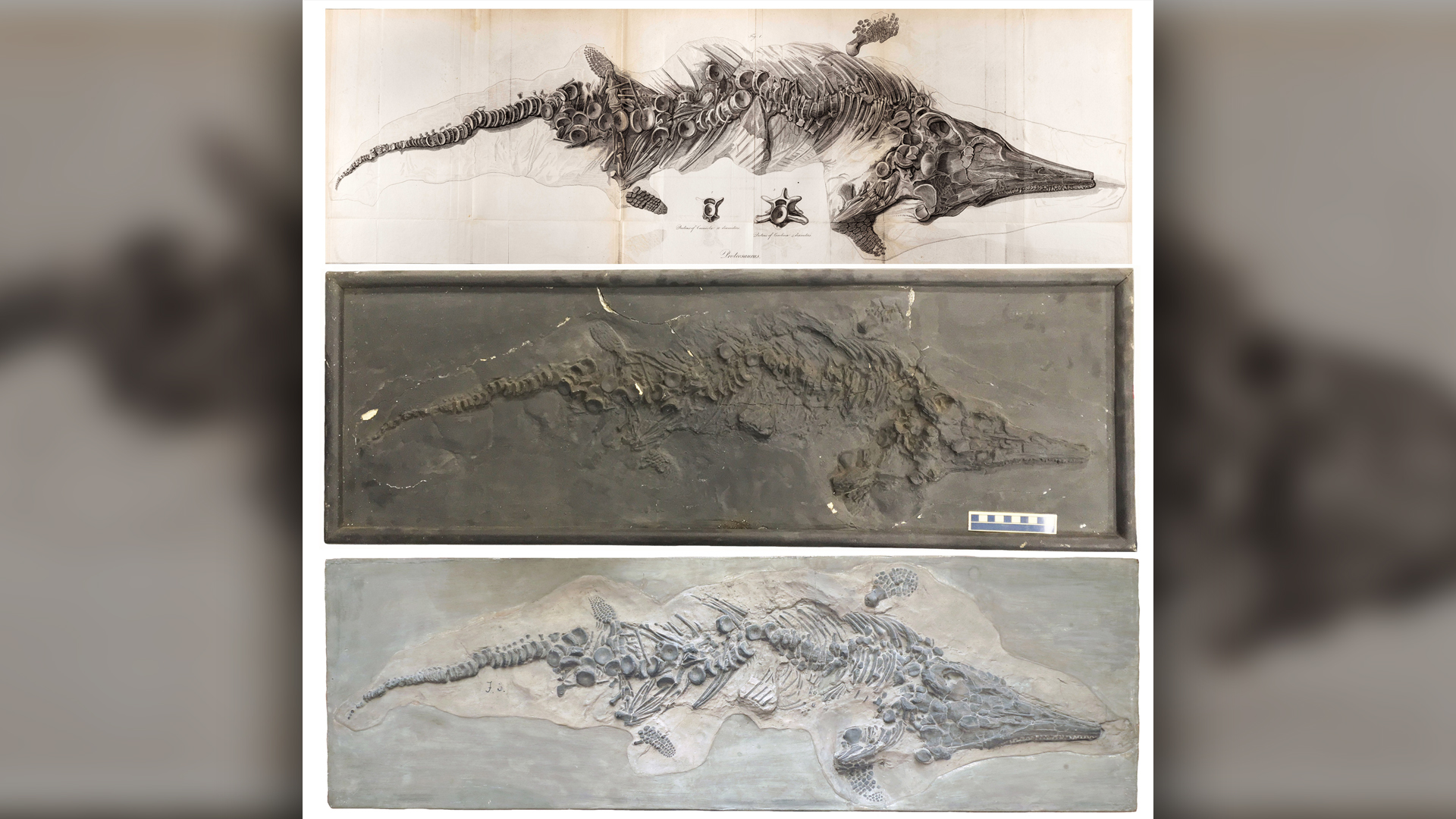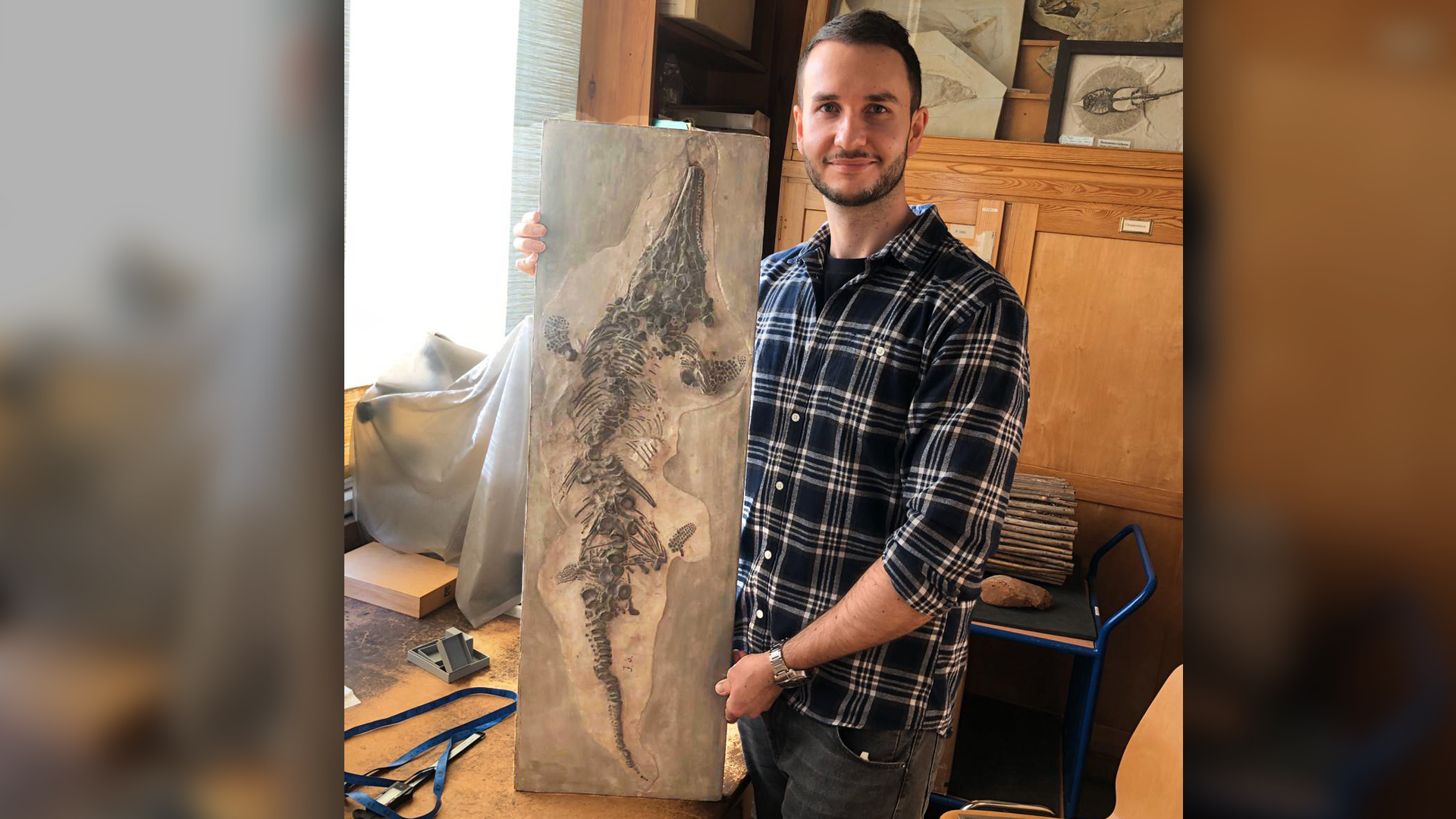Nazi bombs destroyed a priceless 'sea monster' fossil. Scientists just found its long-lost plaster copies.
More than 70 years ago, during a WWII air raid in the U.K., German bombs destroyed a rare fossil of an ichthyosaur. Scientists just found long-lost plaster casts of the priceless skeleton.

When Nazi pilots bombed a precious "sea monster" fossil to smithereens during a World War II London air raid, a detailed black-and-white illustration of the predatory marine reptile, known as an ichthyosaur, was the only visual record that remained of the pulverized ancient bones.
At least, that's what paleontologists thought.
Now, scientists have uncovered two long-lost plaster casts of the skeleton in museums — one in the United States, and one in Germany. The fossil — which had been excavated at Lyme Regis, in southwest England, in 1818 and was described in 1819 — was the first near-complete skeleton of an ichthyosaur ever found. It was the first to show the aquatic reptile with all of its bones in place — including the hind fins, which had not been present in previous fossils — and since 1820, the fossil had resided in the collection of the Royal College of Surgeons in London.
A German air raid's missiles struck the college in May 1941; the fossil "was almost certainly destroyed," and there were no records of plaster models of the fossil, scientists reported Nov. 2 in the journal Royal Society Open Science. It was only "by pure chance" that researchers discovered the casts, during trips in search of early Jurassic ichthyosaur fossils kept "behind the scenes, in the museum vaults," said lead study author Dean Lomax, a paleontologist in the Department of Earth and Environmental Sciences at the University of Manchester in the U.K. and author of "Locked in Time: Animal Behavior Unearthed in 50 Extraordinary Fossils" (Columbia University Press, 2021).
Related: Meet 'Fiona' the pregnant ichthyosaur, Chile's oldest marine reptile mom
"Considering that the specimen was originally found in Britain, it would be safe to assume that if any casts were to be located, then in all likelihood, they would be in a museum in the U.K.," Lomax told Live Science in an email, so their discovery in Germany and the U.S. "came as a huge surprise."
Ichthyosaurs lived alongside dinosaurs and ruled the seas from about 250 million years ago to around 90 million years ago. They had streamlined bodies with long, narrow heads, and measured 10 to 65 feet (3 to 20 meters) long.
Sign up for the Live Science daily newsletter now
Get the world’s most fascinating discoveries delivered straight to your inbox.

Lomax and co-author Judy Massare, a professor emerita in the earth sciences department at SUNY Brockport, found the first of the two casts in 2016, at Yale University's Peabody Museum. The museum acquired the cast as part of a 90,000-specimen collection donated in 1930, and the pose and other skeletal details were identical to those in the illustration of the Lyme Regis ichthyosaur, Lomax and Massare wrote in the study.
However, many of the fine details in the skeletal illustration were absent from the cast, suggesting that it was "either a cast of a cast or that it is a very early cast made directly from the original early in its history," the authors reported.
Related: Prehistoric sea monster was nearly the size of a blue whale
Lomax found the second cast during a December 2019 visit to the collections at Berlin's Natural History Museum. There was no record of the cast in the museum's catalogs; he discovered the plaster slab as he wandered the aisles in the fossil storage facility. "Having spent time studying the Yale cast already, I immediately knew what it was, and I had a huge grin on my face," Lomax said.
The Berlin cast was painted to conform more closely to the published illustration of the fossil, and it was in much better condition than the Yale cast, "exhibiting no damage or deterioration," according to the study. It was likely made later than the Yale specimen and with newer methods that could more accurately capture details in the ichthyosaur's skeleton.

Some of those details were not accurately represented in the surviving drawing, the casts revealed. For example, the right femur is "more slender, more symmetric, and better defined in the illustration than on the Berlin cast," and there are details in the bones of the right hindfin that were not recorded in the illustration, the researchers wrote. Were it not for the casts, there would be no way for modern paleontologists to verify if the structures in the drawing were correct.
While it is unknown who excavated the fossil in the early 19th century, there's a strong possibility that it was unearthed by English paleontologist and fossil collector Mary Anning, according to the study. Anning was renowned for her Jurassic period (201.3 million to 145 million years ago) discoveries at Lyme Regis, including the first known ichthyosaur fossils and the first complete skeleton of a long-necked marine reptile called a plesiosaur, according to London's Natural History Museum.
Finding the casts of that long-lost fossil "felt almost like I was walking in Mary Anning's footsteps, having that same great thrill of discovering this fossil all over again," Lomax said.

Mindy Weisberger is an editor at Scholastic and a former Live Science channel editor and senior writer. She has reported on general science, covering climate change, paleontology, biology and space. Mindy studied film at Columbia University; prior to Live Science she produced, wrote and directed media for the American Museum of Natural History in New York City. Her videos about dinosaurs, astrophysics, biodiversity and evolution appear in museums and science centers worldwide, earning awards such as the CINE Golden Eagle and the Communicator Award of Excellence. Her writing has also appeared in Scientific American, The Washington Post and How It Works Magazine. Her book "Rise of the Zombie Bugs: The Surprising Science of Parasitic Mind Control" will be published in spring 2025 by Johns Hopkins University Press.









